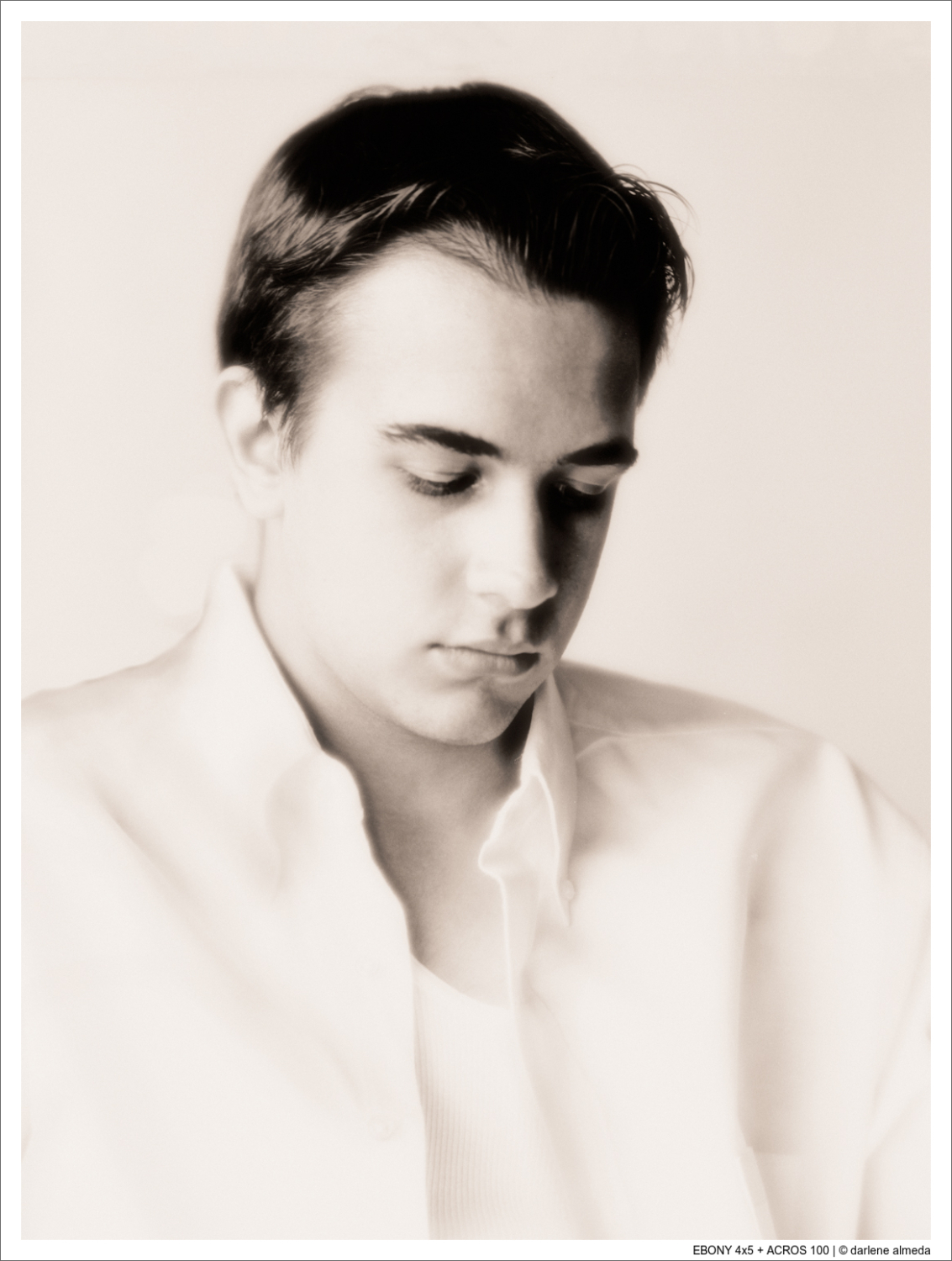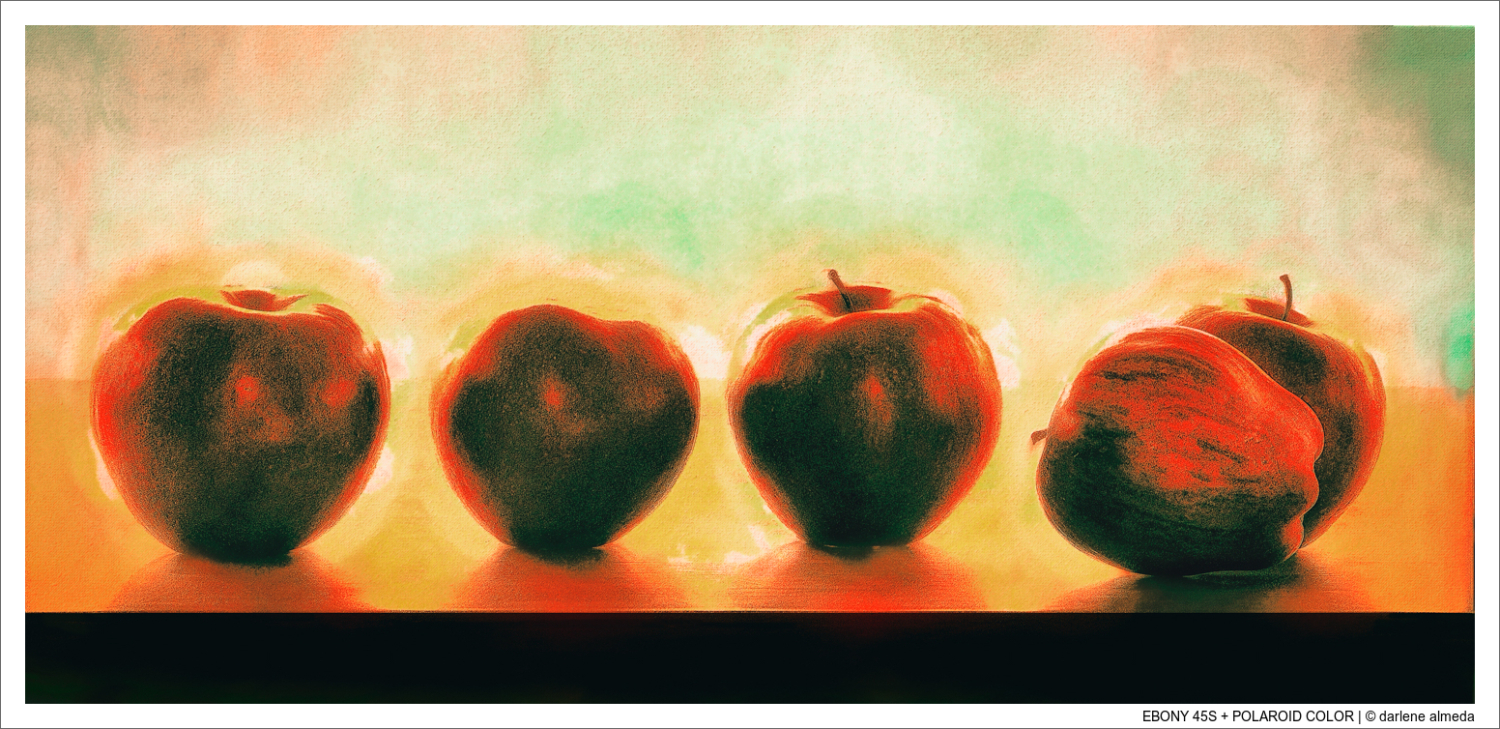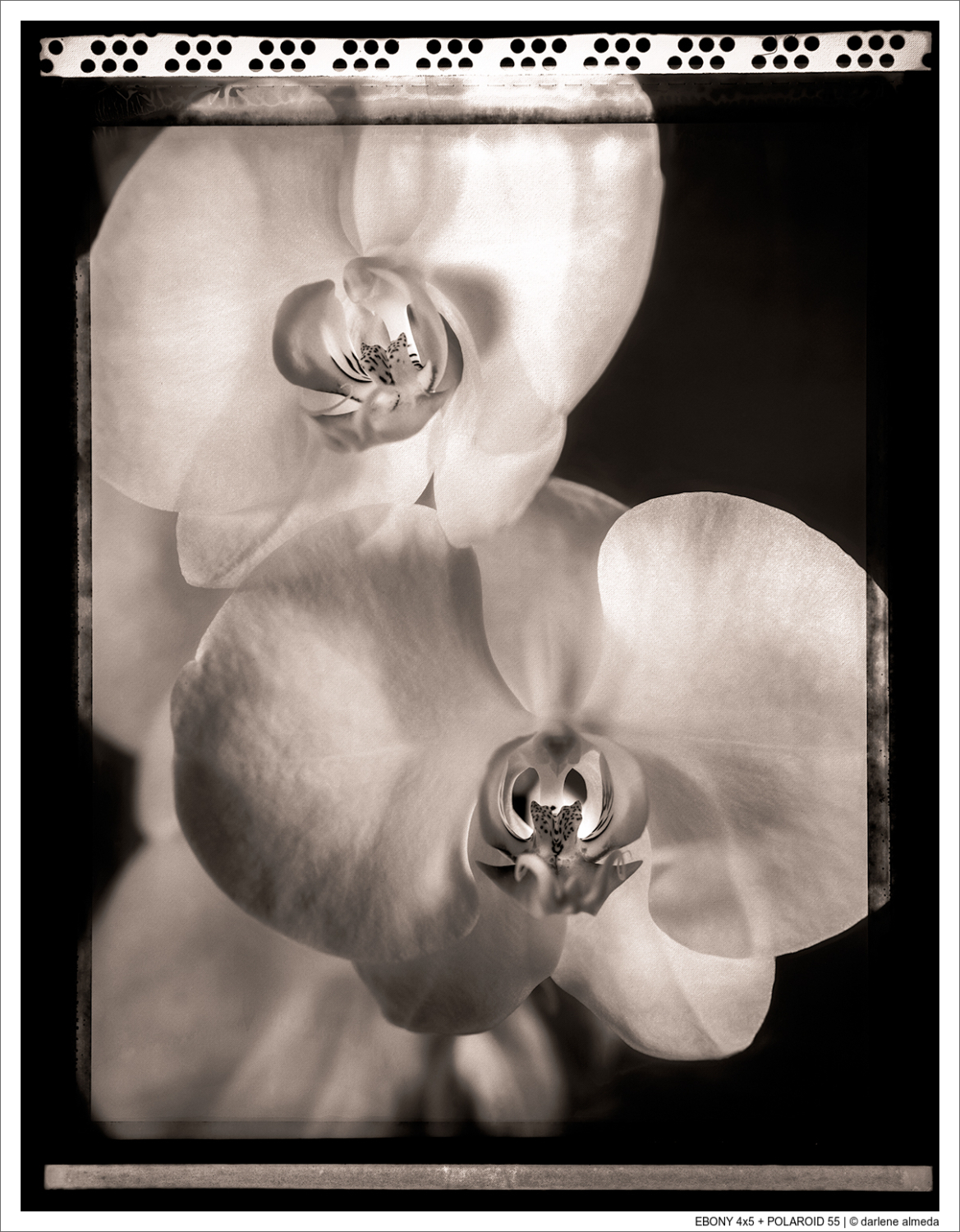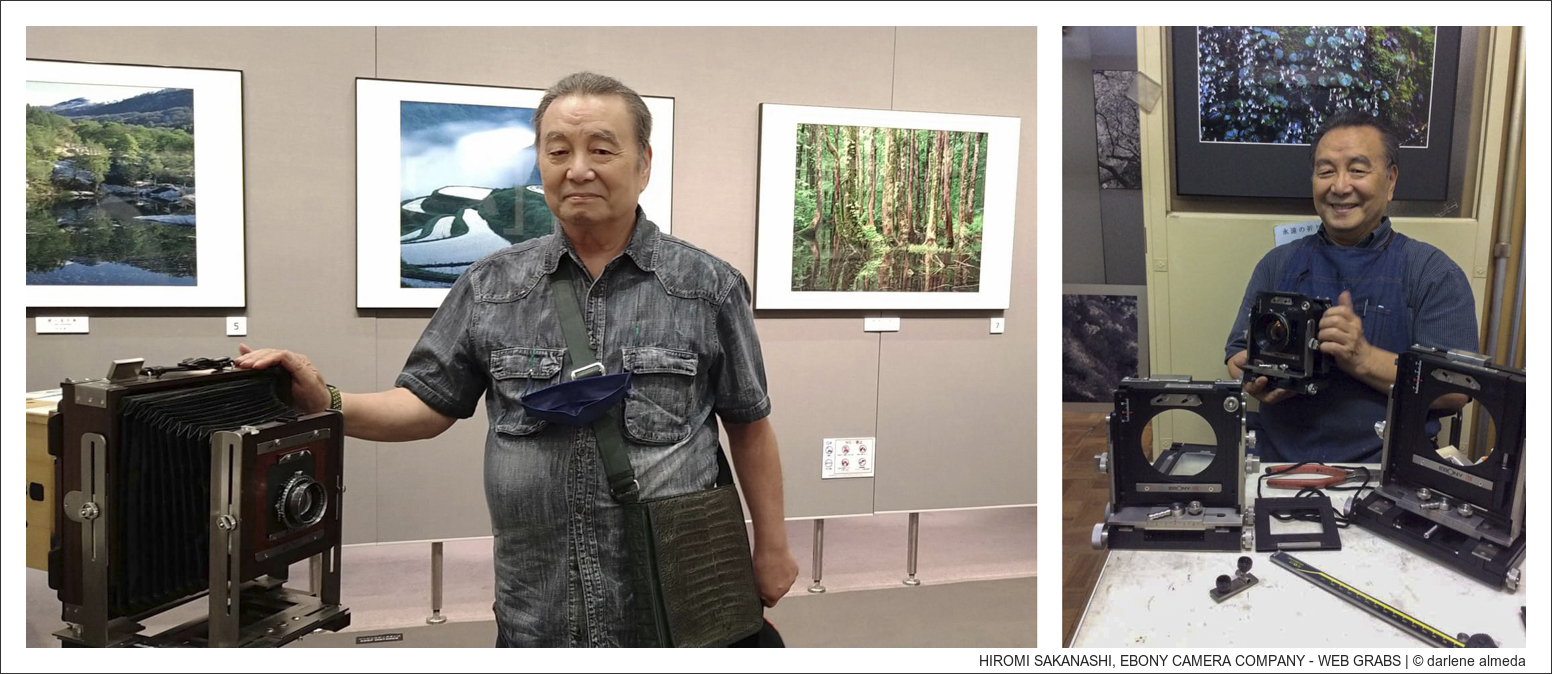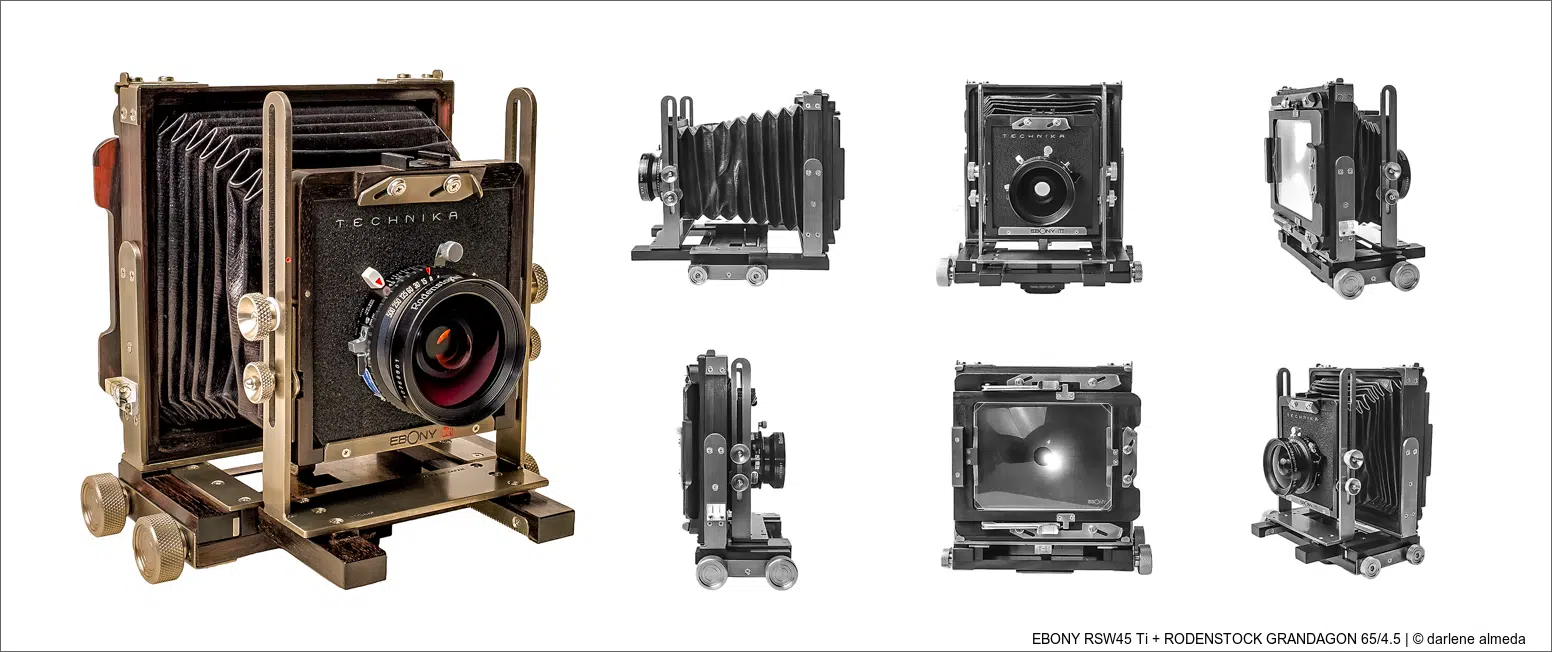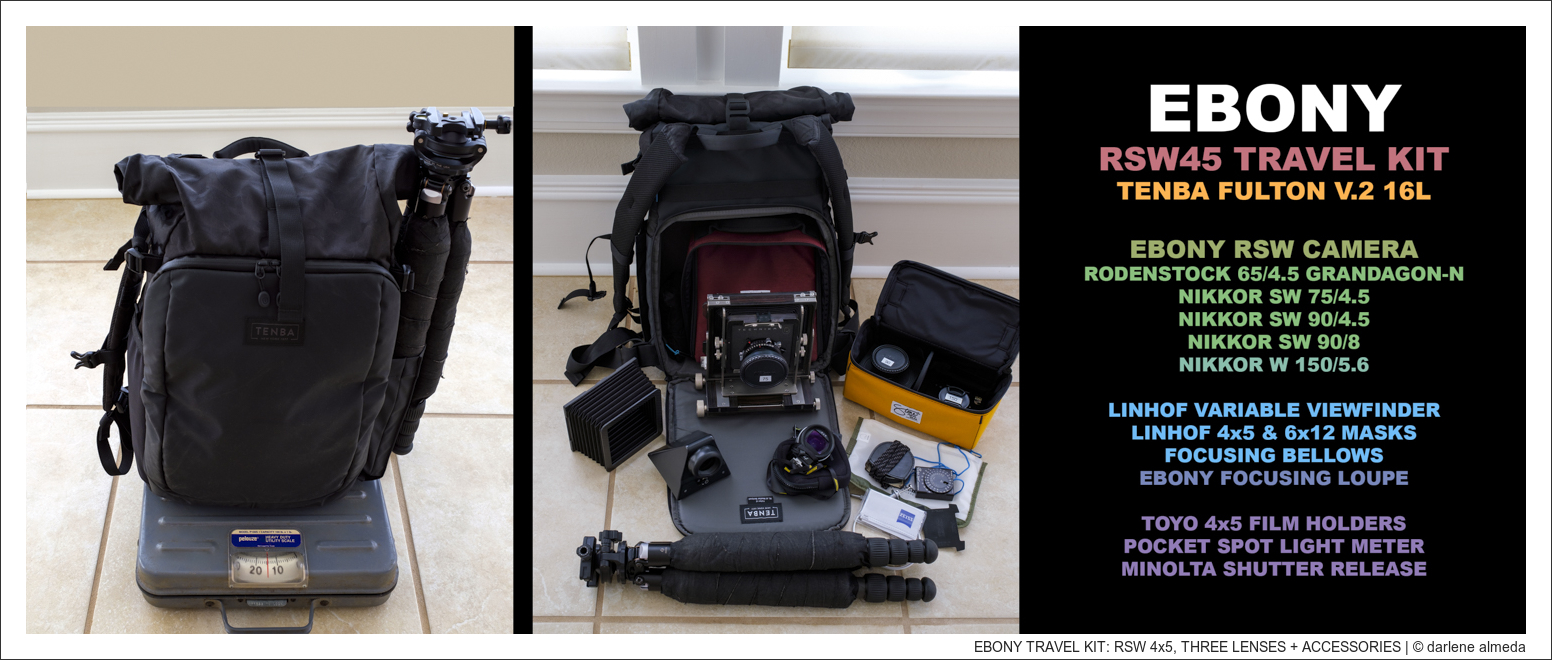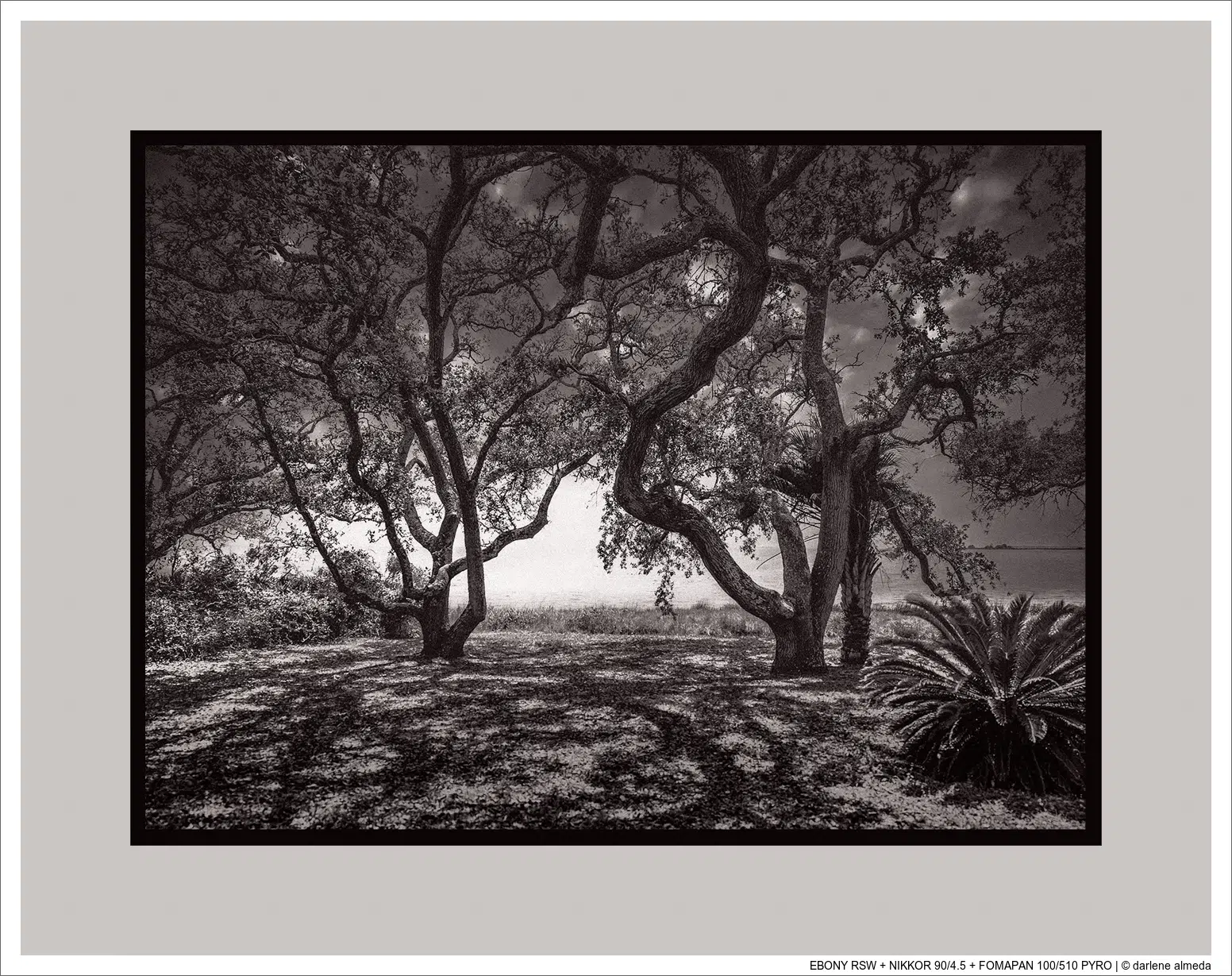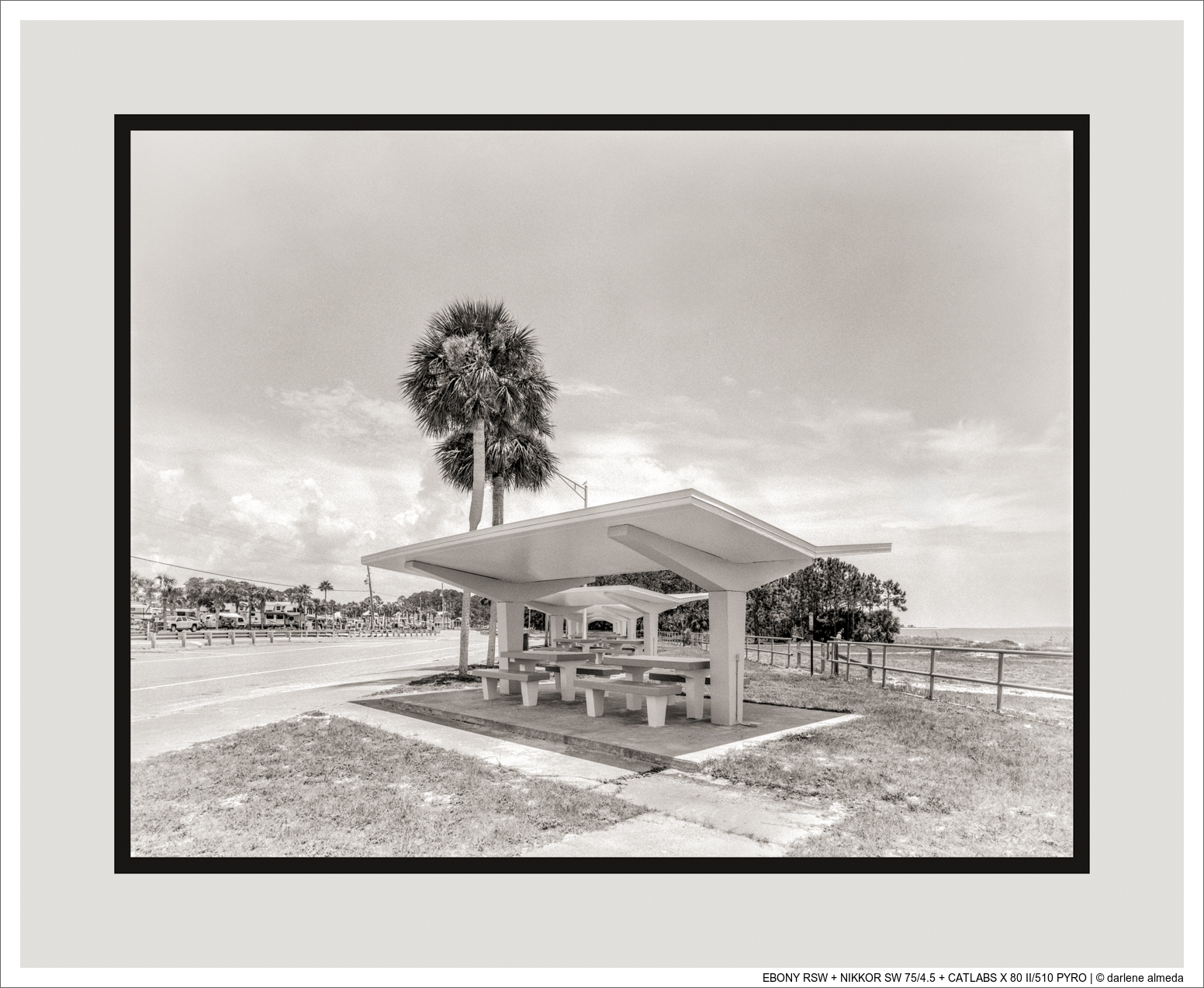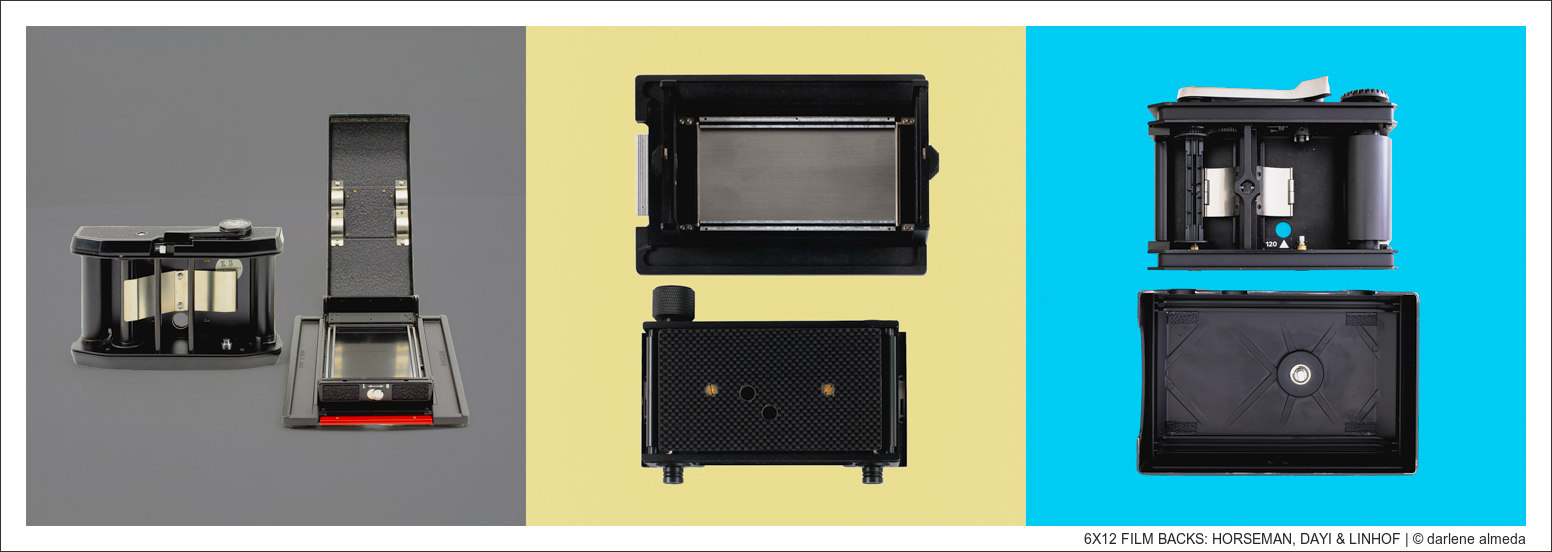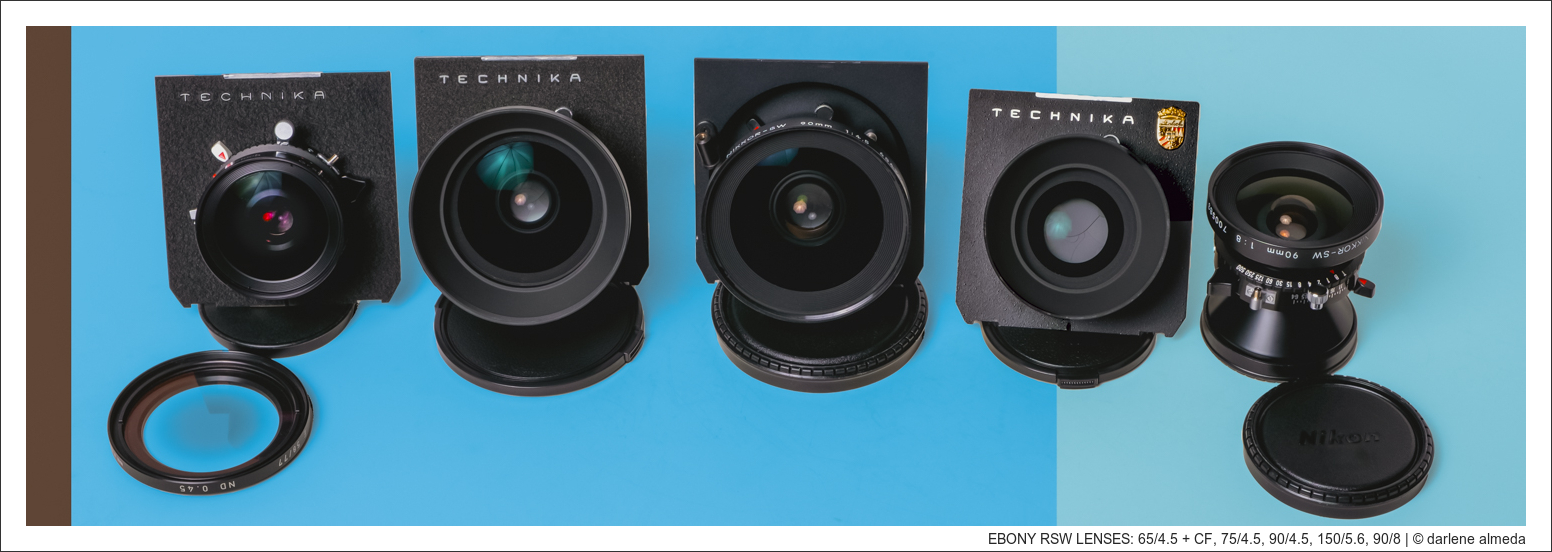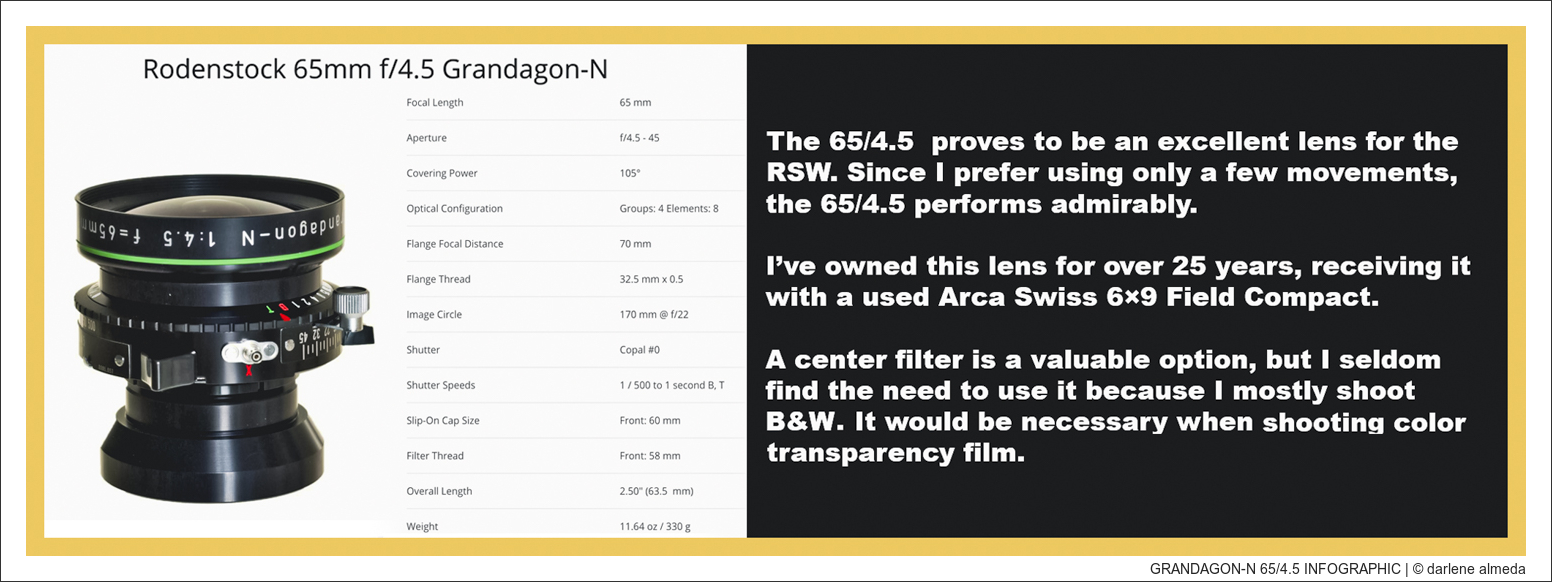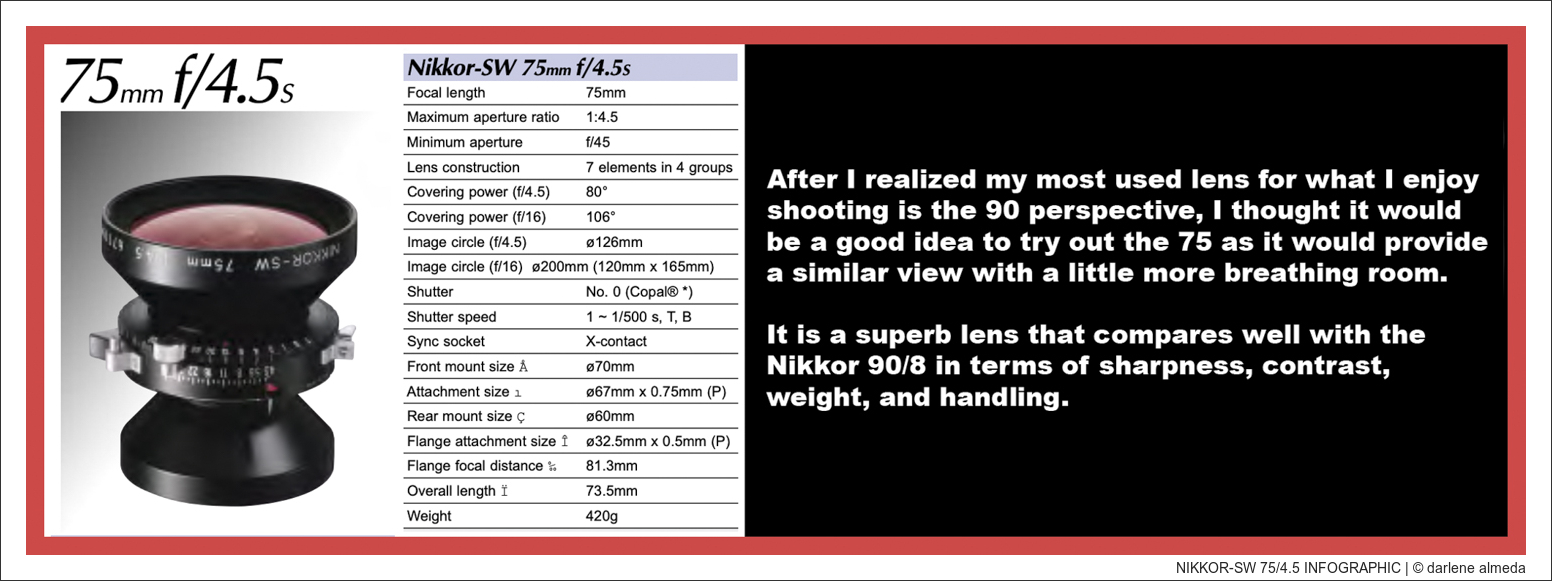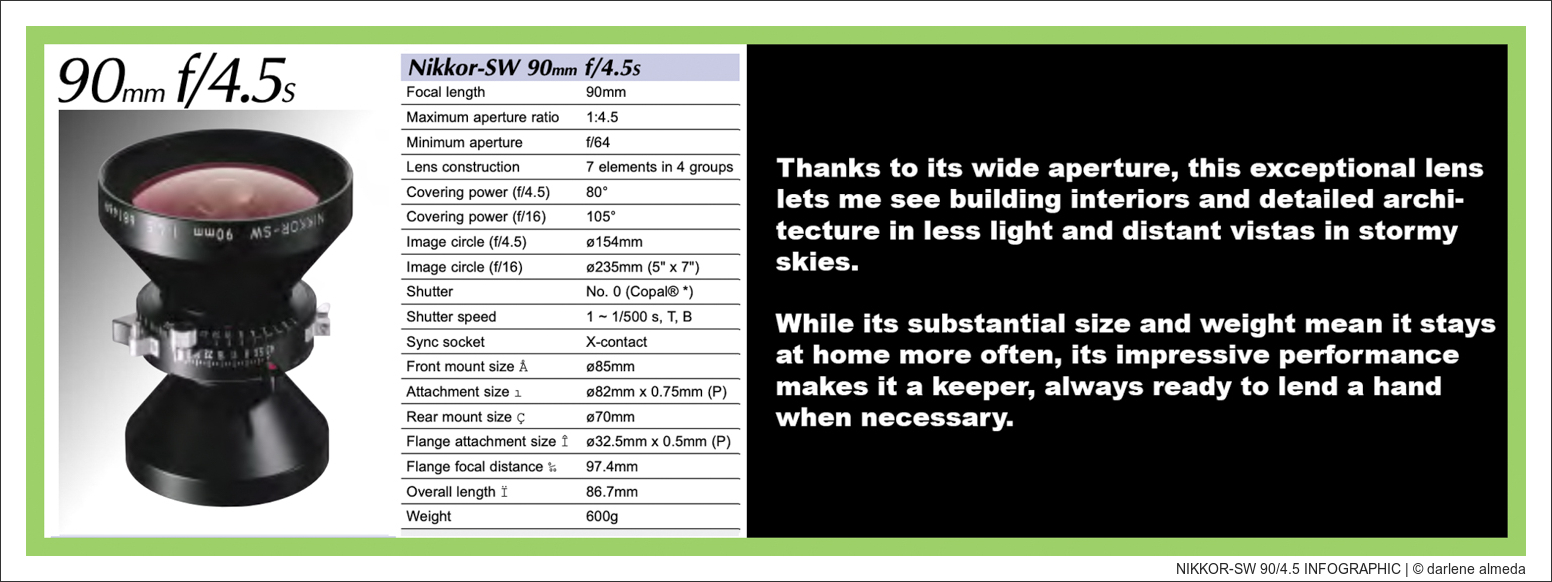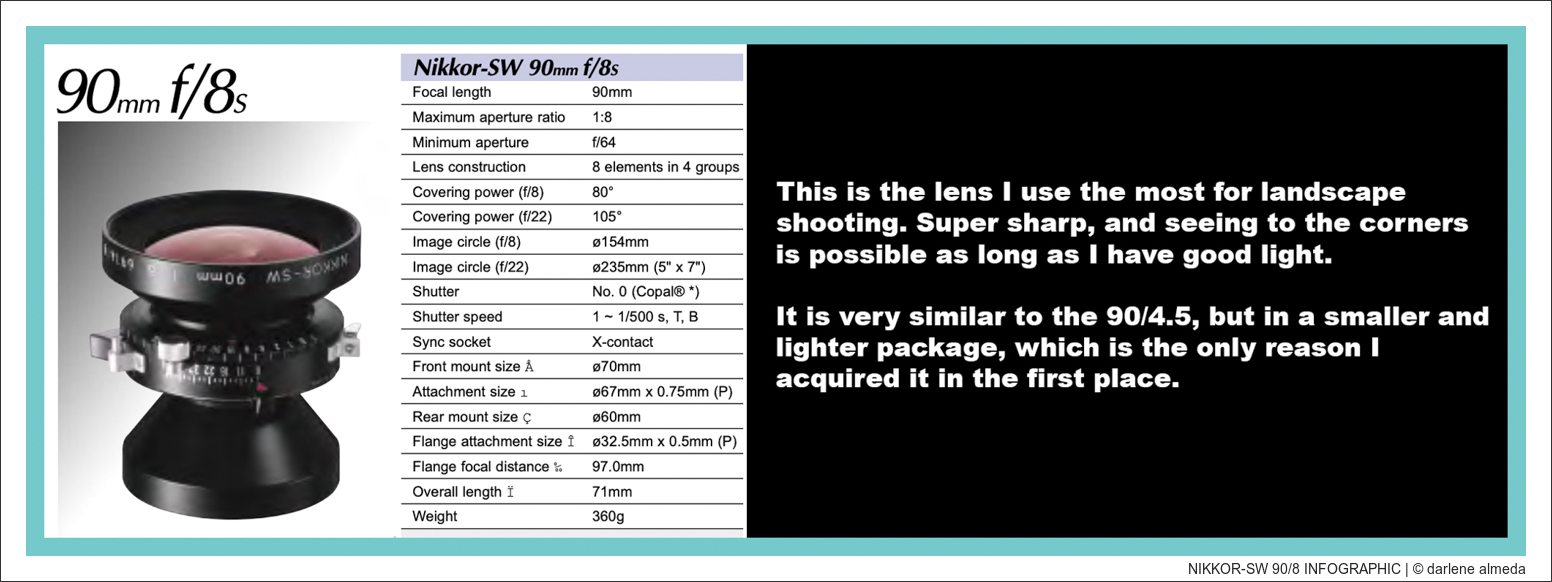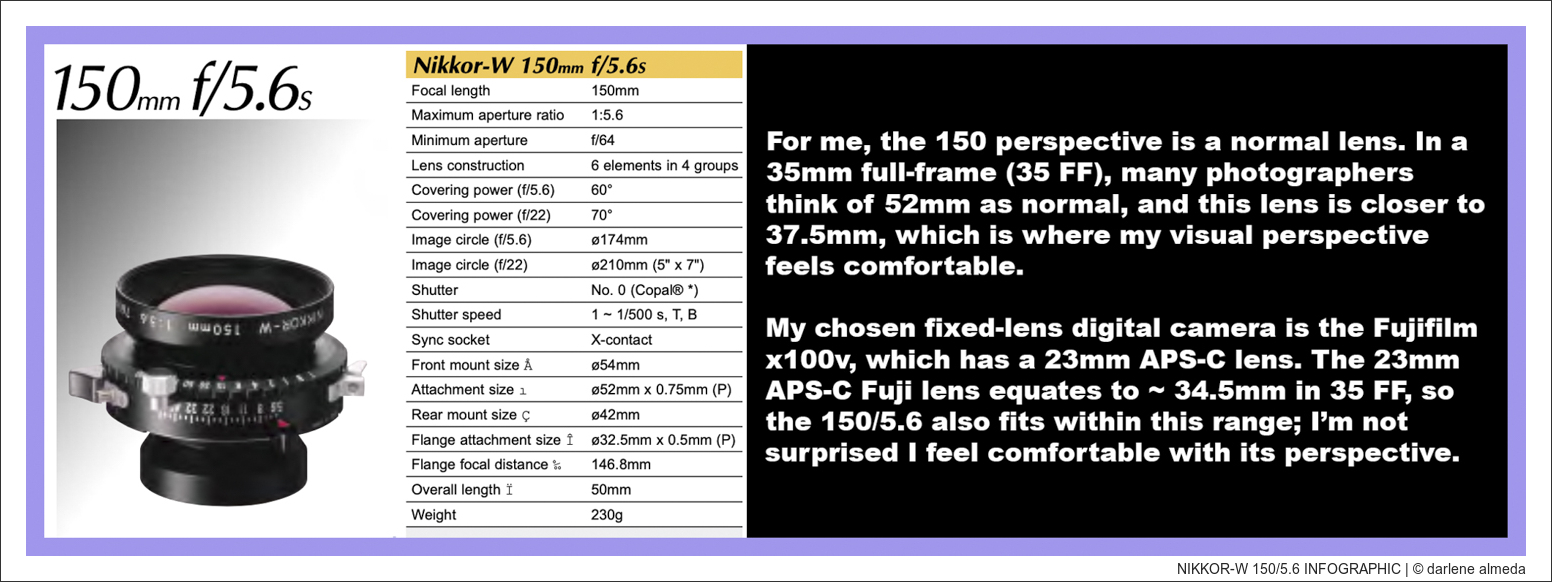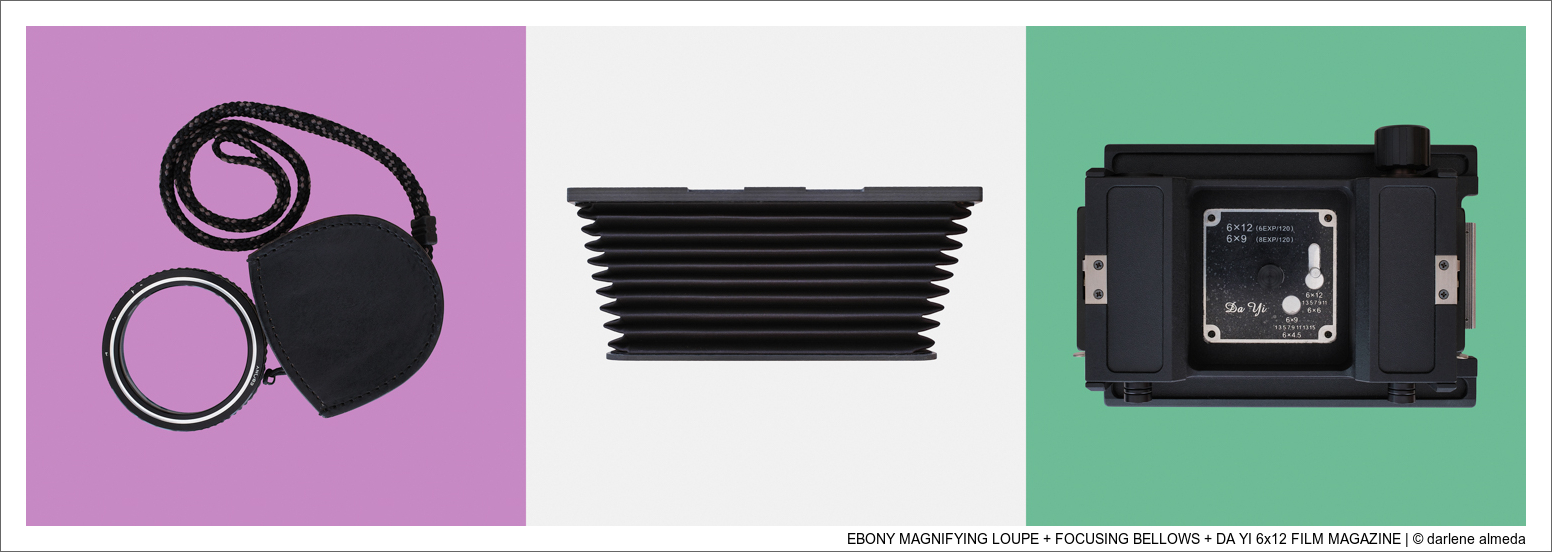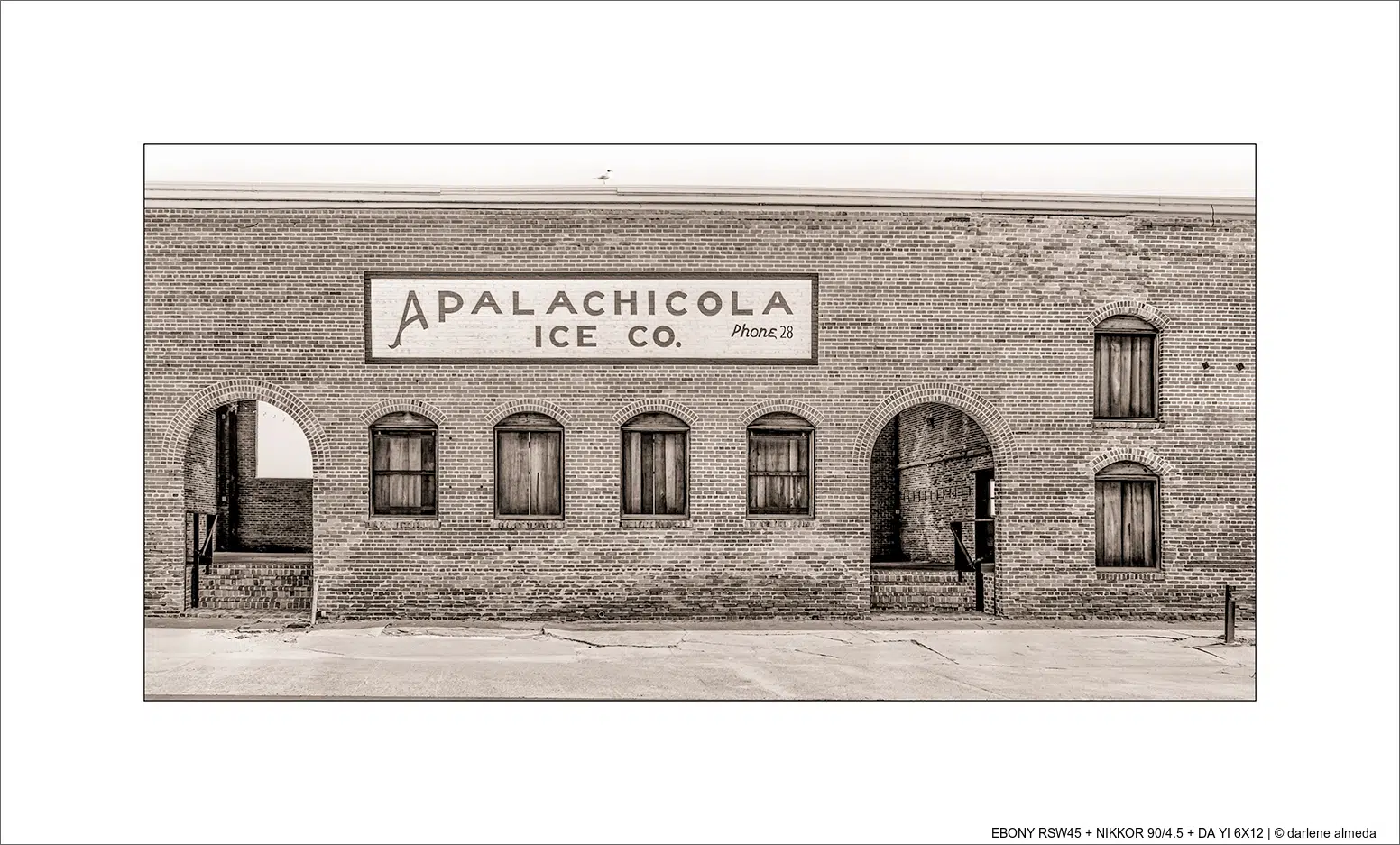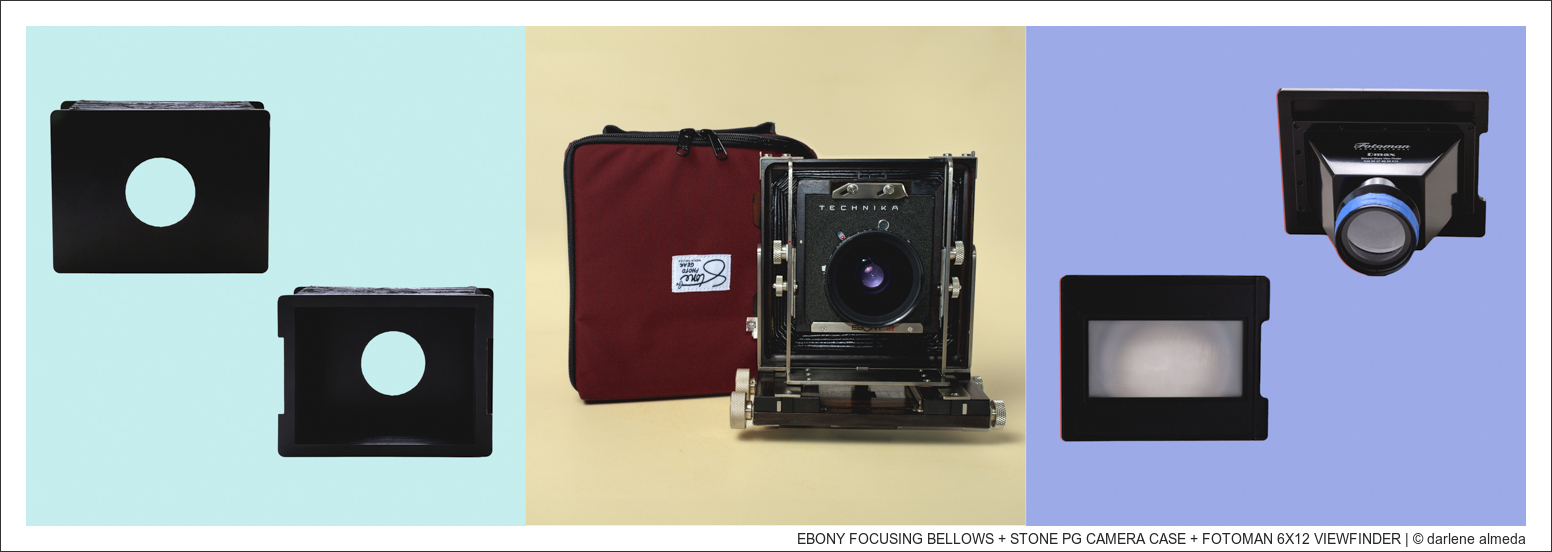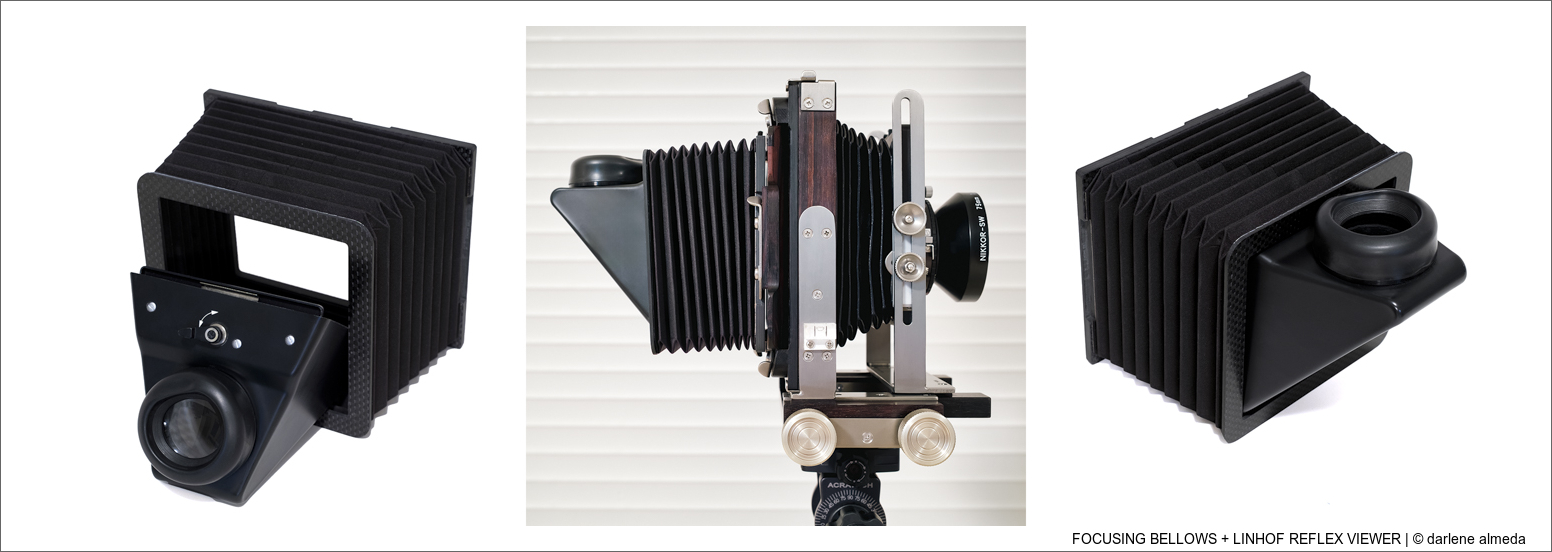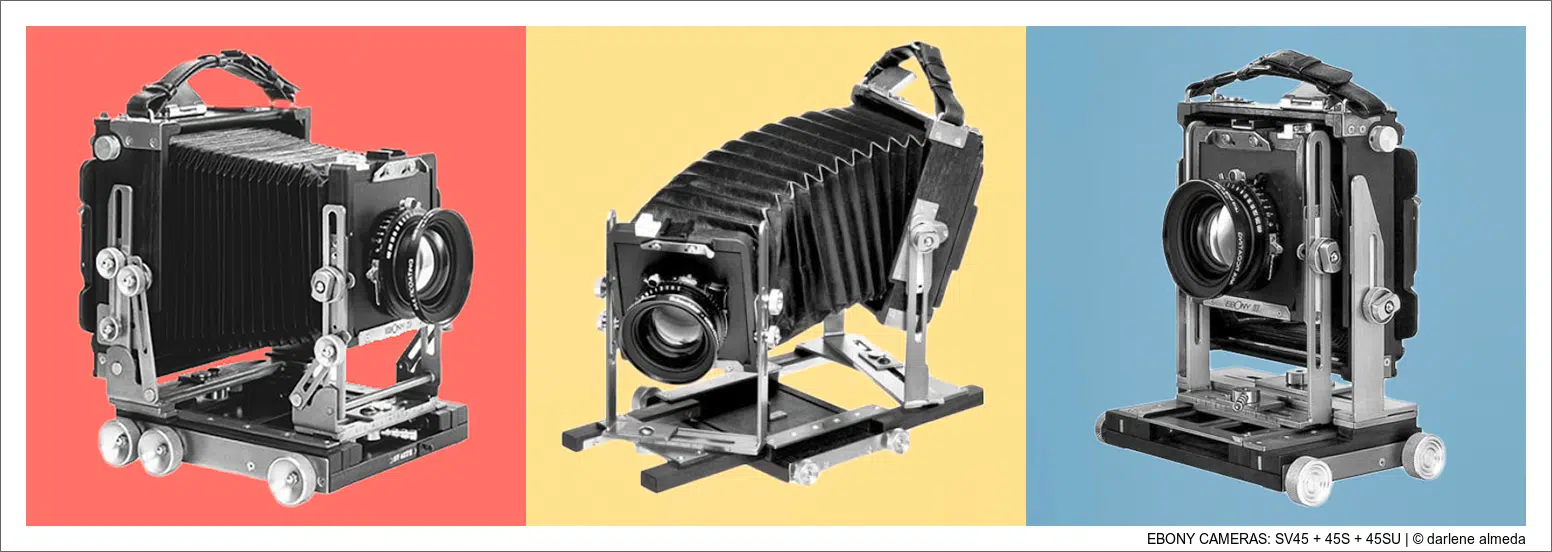
[ EBONY CAMERAS: SV45 + 45S + 45SU ]
EBONY CAMERAS [ YES ]
EBONY CAMERAS
EBONY CAMERA HISTORY: 1981-2016
MY EBONY CAMERA HISTORY: (3×1)+(1×2) = 5
EBONY RSW45 Ti: LANDSCAPE & ARCHITECTURAL CAMERA
EBONY SW45 vs RSW45: DIFFERENCES
EBONY RSW: ROAD KIT
EBONY RSW: WHAT I TYPICALLY SHOOT
EBONY RSW: FILM CHOICE & FORMATS
EBONY RSW: REGARDING 6×12 FILM MAGAZINES
LENSES
MY RSW 4×5 KIT LENSES
– RODENSTOCK: 65/4.5 GRANDAGON-N + CENTER FILTER
– NIKON: NIKKOR SW 75/4.5
– NIKON: NIKKOR SW 90/4.5
– NIKON: NIKKOR SW 90/8
– NIKON: NIKKOR W 150/5.6
EBONY ACCESSORIES
EBONY ACCESSORIES
– EBONY CAMERA FOCUSING BELLOWS: THE ORIGINAL
– EBONY CAMERA FOCUSING LOUPE: THE BEST FOR MY EYES
– EBONY CAMERA REDUCING BACK 45-69: UNIQUE BACK w/GROUND GLASS
THIRD-PARTY ACCESSORIES
– CAMBO REFLEX VIEWFINDER: CUSTOM-FITTED BY EBONY CAMERA
– COMPENDIUM LENS HOOD: GET ONE WHILE YOU CAN
– DAYI 6×12 FILM MAGAZINE: AFFORDABLE 6X12 MAGAZINE
– FOCUSING BELLOWS: CARBON FIBER – BETTER THAN THE ORIGINAL
– FOTOMAN 6X12 VIEWFINDER: w/BRIGHT GROUND GLASS
– LINHOF VIEWFINDER LOUPE: MATED WITH THE FOCUSING BELLOWS
– STONE PHOTOGRAPHIC GEAR: CUSTOM MADE CASE FOR RSW
IMAGES
HIROMI SAKANASHI: EBONY CAMERA COMPANY
EBONY CAMERAS: 45SU, SV45, RSW #1, RSW #2, 45S
EBONY RSW45 Ti: w/RODENSTOCK GRANDAGON 65/4.5 + MULTI VIEWS
EBONY TRAVEL KIT: RSW 4×5, THREE LENSES + ACCESSORIES
PARADISE FOUND: EBONY RSW + NIKKOR 90/4.5S + FOMAPAN 100/510 PYRO
ROADSIDE TREASURE: EBONY RSW + NIKKOR SW 75/4.5 + CATLABS X 80 II/510 PYRO
REGARDING 6×12 FILM BACKS: HORSEMAN, DAYI & LINHOF
MY KIT LENSES: 65/4.5 + CF, 75/4.5, 90/4.5, 90/8, 150/5.6
RODENSTOCK: 65/4.5 GRANDAGON-N
NIKON: 75/4.5 NIKKOR SW
NIKON: 90/4.5 NIKKOR SW
NIKON: 90/8 NIKKOR SW
NIKON: 150/5.6 NIKKOR W
ACCESSORIES: EBONY MAGNIFYING LOUPE + FOCUSING BELLOWS + DA YI 6×12 FILM MAGAZINE
ACCESSORIES: FOCUSING BELLOWS w/LINHOF REFLEX VIEWER
APALACHICOLA ICE CO.: EBONY RSW45 + NIKON NIKKOR-SW 90/4.5 + DA YI 6×12
COMPENDIUM LENS HOOD: EBONY RSW + NIKKOR SW 75/4.5 + COMPENDIUM LENS HOOD
EBONY REDUCING BACK: 4×5″ to 6x9cm
CAMBO T-20 REFLEX HOOD: MODIFIED FOR EBONY
EBONY IMAGE GALLERY: IMAGES MADE WITH EBONY CAMERAS
EBONY CAMERA HISTORY
IMAGE #2: [ HIROMI SAKANASHI, EBONY CAMERA COMPANY ]
The Ebony Camera Company was started in 1981 when Hiromi Sakanashi, a photographer from Kyushu, Japan, could not find a large-format camera that was lightweight and portable like a field camera but with the rigidity of a monorail. So Hiromi decided to create his own, and other photographers noticed and asked him to build them one, too; thus, the Ebony Camera Company was born.
Ebony cameras were produced in a small workshop in Tokoyo that employed less than ten people. Ebony made approximately 40 different models of ebony wood and titanium cameras. Some mahogany models were produced, especially in larger formats, to save on weight. Ebony cameras were made in formats from 6×9cm through 20×24″, including traditional folding field cameras and non-folding models, some with asymmetrical back movements. Sadly, the Ebony Camera Company closed on June 30, 2016, upon Hiromi’s retirement.
The Sakanashi family has been in the photographic business since 1871, when Hiromi’s great-grandfather founded one of Japan’s first photographic equipment stores in Kumamoto, Kyūshū. Hiromi is a graduate of Tokyo Photographic University and worked as a professional photographer in the 1970s, doing architectural and studio work. He also ran the family business, which had evolved into a store specializing in professional photographic equipment by then, and he led workshops for Japanese photographers in various European countries.
LITERATURE DOWNLOADS AVAILABLE:
EQUIPMENT LIST: MY PERSONAL EBONY INVENTORY HISTORY
CAMERAS: 45S, 45SU, RSW45, SV45
NIKON NIKKOR LENSES: SW 75/4.5, SW 90/4.5, SW 90/8, W 150/5.6, W 210/5.6, M 300/9
RODENSTOCK LENSES: Grandagon-N: 65/4.5 & 90/4.5, 135/5.6 APO-Sironar-S, 210/5.6 APO-Sironar-N
SCHNEIDER LENSES: 120/5.6 Macro-Symmar HM, 120/5.6 Macro-Digitar, 150/5.6 Symmar-S
OTHER LENSES: Docter 240/9.0 & Cooke PS945 229/4.5
BACKS: Reducing Back 45-69, Horseman 6×12, Da Yi 6×12
OTHER: Ebony Focusing Bellows & Loupe, Fotoman 6×12 Viewfinder w/Fresnel GG
OTHER: Made For Ebony Compendium Hood
MY EBONY CAMERA HISTORY (3×1)+(1×2) = 5
IMAGE #3: [ EBONY CAMERAS: 45SU, SV45, RSW #1, RSW #2, 45S ]
How many photographers invest in high-quality gear only to sell it, feeling it didn’t meet their needs, yet regret it later? I’ve been on a journey spanning decades to discover what works best. I have learned that defining what type of photography I am pursuing is a critical factor.
My current needs diverge significantly from the equipment I depended on during my professional career, contributing to my challenges in acquiring suitable gear. The photography I engage in now is markedly different from the work I used to do for a living.
Over the span of 25 years, I’ve acquired five Ebony cameras, four different models, with one model purchased twice because of my gear alignment challenges.
My first foray into Ebony cameras was with a beautiful SV45. However, I quickly realized, especially after an incident with my Wisner 5×7, that I prefer non-folding field cameras, likely due to my fondness for monorail cameras. I find them quicker and easier to set up, especially when leaving a lens mounted while stowing or transporting. Eventually, I bid farewell to the SV45 and made the leap to Ebony’s 4×5 non-folding masterpiece, the 45SU.
As the weight of the 45SU became cumbersome and I found little utility in its asymmetric tilts, I opted to sell it and transition to the RSW45 (RSW) following glowing reviews praising its lightweight build and suitability for landscape photographers. Yet, soon after acquiring the RSW, I had to pause my landscape photography pursuits after accepting a full-time teaching position. Regrettably, I sold off the RSW—a decision I would later regret.
Several years later, I added a 45S to my collection—a versatile 4×5 camera I used primarily in the studio. As retirement approached, I intended to delve into landscape photography and soon realized that the RSW was the ideal fit for my outdoor photographic endeavors. Despite Ebony’s SW45 model, tailored for landscape and architectural photography and offering greater movements, it was the lightweight design of the RSW that ultimately won me over.
It took me two years to find a clean RSW that would become the second purchase of the same model field camera in my gear history. She is now a permanent fixture in my bag! Up next is a deeper dive into the RSW.
EBONY RSW45 Ti
IMAGE #4: [ EBONY RSW45 Ti + RODENSTOCK GRANDAGON 65/4.5 ]
MY LANDSCAPE 4×5 CAMERA
In 2019, I decided to start looking for another Ebony RSW. Finding one that fits my budget and condition requirements was a challenge. It took two years to locate it, and I am happy Green Mountain Camera in South Burlington, Vermont, made it happen. Please look at their eBay store and website for good deals on great equipment.
It must have been ten years since I held my original RSW, and it is lightweight compared to my Linhof 3000 and easier to use with wide lenses.
The first time I took it out with the Rodenstock Grandagon 65/4.5, I asked myself: “Why did I ever let it go?” Back then, however, I was too busy shooting for online product catalogs and teaching commercial photography in the classroom to devote time to a 4×5 field camera out in the landscape. However, the thought of being able to do it after I retired never left my mind.
The RSW is a uniquely configured camera designed around the SW45.
Initially, it was only available in the UK through Robert White Photographic Retailers. They contacted Ebony Camera with their design for the RSW and requested it be made and sold only through their stores. So, if you wanted a new RSW, you had to order it from Robert White.
Both RSW cameras I owned were purchased on the used market, and since Ebony Camera closed in 2016, a used RSW is the only option.
The RSW is simply a stripped-down SW45 but a popular camera with some photographers, so much so other camera makers have copied its design. It may have been the most minimalist 4×5 camera Ebony Camera made. It can be considered a beginner’s camera, except the materials and quality differ from a beginner’s camera.
The differences between the SW45 and RSW45 cameras are shown below.
SW45 |
RSW45 |
| FRONT RISE: 60mm | FRONT RISE: 60mm |
| FRONT FALL: 25mm | FRONT FALL: 25mm |
| FRONT SHIFT: 38mm+38mm | — |
| FRONT SWING: 45°+45° | — |
| FRONT CENTER TILT: 20°+20° | FRONT CENTER TILT: 20°+20° |
| BACK RISE: 50mm | — |
| USABLE LENSES: 35mm – 180mm |
USABLE LENSES: 35mm – 180mm |
| WEIGHT: 3.49 lbs (1.5kg) | WEIGHT: 2.85 lbs (1.1kg) |
You might wonder why I prefer the RSW when I could have had an SW for about the same price.
The RSW’s lighter weight and solid stationary rear standard are the most attractive to me. I do not need front movements other than rise/fall and tilt.
It may sound odd to some photographers to voluntarily give up movements, but hear me out.
When I sold my Jobo ATL 1000 a decade ago, I gave up shooting color film for a digital back. If I wanted to go that route, the RSW rear standard might be strong enough for a digital back.
As of this writing, I have not tried the RSW with my digital back because I enjoy shooting B&W films more. If I think a photo will look good in color, I colorize it (example here) using a Wacom tablet and pen in PS. I will update this article when and if I try my digital back with the RSW.
I also have a Linhof 3000 with more reach and movement if I have a landscape project that requires more of each. The 3000 is not my favorite camera for wide-angle lenses. It can be done, but shooting my Grandagon 65 on the 3000 makes me feel constrained. The 3000 requires the bed to drop and some fiddling with the camera to ensure its box is not visible in the composition.
As a landscape shooter, I need a 4×5 that allows the use of wide and extreme wide-angle lenses without a hassle. It needs to operate quickly and precisely and not get in the way, or I will leave it behind regardless of whatever niceties it may offer.
Being an older, solo, petite female in the landscape has its challenges, and I do not let it stop me, but I know what works for me and what does not. The 3000 is a beautiful camera, but it works best with the lenses I use in the 90 – 300mm range.
PROS
The RSW is an easy-to-use landscape field designed exclusively for wide-angle shooting. Its lens range is 35mm – 180mm, with only the 35mm requiring a recessed lens board. I doubt I will go beyond 65mm to 150mm. The similar SW camera and RSW share the same lens range, but a few movements have been eliminated for the RSW, making it more stable for digital back use, lighter to carry, and quicker to set up. Here is Robert White’s introduction video about the RSW.
CONS
What I prefer about my other field camera, the Linhof 3000 to the RSW, is some of its accessories, especially my most-used accessory, the Linhof bellows viewfinder. If you dislike using a dark cloth out in the landscape, it is the bee’s knees.
Unfortunately, the Techno Rollex (TR) 6×12 does not fit under the RSW’s graflock slide bars. The bars might work if adjusted, but the TR is heavy for the RSW, so I don’t know if I would be happy with it in the long run (update: I sold it in 2023, replacing it with a Fotoman 6×17).
I use a Da Yi (Shen Hao) 6×12 back with the RSW. In the past, I used a Horseman 6×12 with my previous RSW and 45SU cameras, and I may get another if the Da Yi does not work out. So far, the Da Yi 6×12 back has given me some difficulty, but the film has come out fine. So, my biggest dislike about the RSW, which goes for all Ebony cameras, is its lack of available accessories.
EBONY ROAD KIT
IMAGE #5: [ EBONY TRAVEL KIT: RSW 4×5, THREE LENSES + ACCESSORIES ]
ON THE ROAD WITH THE RSW
I enjoy campervan travel in my home state of Florida, and the RSW is my 4×5 film travel and landscape camera. My RSW kit consists of lenses from 65-150 and a few accessories, and it all fits nicely in a Tenba Fulton v2 16L Backpack. Here is my write-up on using the Fulton v2 16L with the RSW.
I am based in North Florida, not far from the Georgia border, and enjoy traveling to Florida’s east coast, west coast, the Panhandle, south Georgia, and eastern Alabama. I have no desire to travel south of Orlando after living in Miami-Dade for more years than I cared to. I have palm trees on my property; traveling south to see these adorable mop tops is unnecessary.
I had already chosen North Florida as my retirement destination long before I retired. What captivates me about this area is its stunning landscape.
North Florida boasts the largest forest in the state, the Apalachicola, with 571,088 acres and 2,735 acres of water. It is home to one of the oldest National Wildlife Refuge in the United States, St. Marks NWR, established in 1931.
I’ve always been drawn to the diverse habitats here, from forest with cypress, oak, and magnolias in wet, lowland areas to stands of slash and longleaf pines covering sandhills and Flatwoods—the gorgeous marshlands teeming with birds and lush subtropical vegetation, including palm trees and other exotic plants.
At one point, I entertained the idea of immersing myself in bird photography.
However, I quickly realized that it would require a significant investment of time and money, as well as a switch from my medium-format gear to full-frame bodies with exotic zoom lenses coupled with teleconverters.
Regrettably, this realization dampened my enthusiasm to become a bird photographer.
Nonetheless, I still find immense joy in observing the magnificent birds of Florida and admiring the stunning images captured by more skilled nature photographers than myself.
WHAT I TYPICALLY SHOOT WITH THE RSW
IMAGE #6: [ EBONY RSW + NIKON NIKKOR 90/4.5S + FOMAPAN 100/510 PYRO ]
SHOOTING THE RSW
North Florida is my home, and I am very much attracted to this area’s architecture, small towns, semi-tropical landscapes, and various fauna and flora.
So, what do I typically shoot with the RSW? All of the above.
For example, the photograph above was taken near St. George Island. The subsequent image, displayed below in the Film Choice & Formats section, was captured shortly after the above one. Both images were taken during the same trip using the RSW and a Nikkor SW 90/4.5 and Nikkor SW 75/4.5 lenses, but they were shot on different film types.
I became unhappy with Fomapan 100 and decided to try CatLabs X 80 II. I’m glad I did.
North Florida is full of old oaks, among other beautiful trees—many small towns with antebellum-style mansions, tobacco barns, and old warehouses adjacent to railroad tracks built for storing and transporting fresh-picked cotton and produce. There is also a lot of old touristy stuff that is fun to see and shoot, like the image below of a roadside picnic area.
I am not much of a beach person, but I enjoy photographing the dunes and scrub pines that populate the nearby Gulf Coast and the fishing boats.
FILM CHOICE & FORMATS
IMAGE #7: [ EBONY RSW + NIKKOR SW 75/4.5 + CATLABS X 80 II/510 PYRO ]
FILM CHOICE & FORMATS
I shoot both 4×5 and 120 films with my RSW camera. Currently, I’m exposing 120 films through a 6×12 DaYi film magazine. Occasionally, I crop a 4×5 negative or a 120 negative into a 6×17 perspective, depending on what looks better.
With the increasing cost of film, I stock up during sale events and have a seperate freezer dedicated to film storage. For some photographers, shooting in the 4×5 format can be expensive, especially if they intend to crop it down to 6×17 when 120 film choices are more readily available and cost-effective.
In late 2023, I returned to shooting with a Fotoman 617 for this purpose. I previously owned a Fotoman 617 but sold it over a decade ago. The prospect of acquiring another 5×7 camera, such as the Wisner 5×7 Technical Field I once had many years ago, is outside my agenda. The additional weight, film expenses, and processing associated with 5×7 photography don’t align with my preferences, especially when I can quickly achieve my desired results through cropping.
I’ve always wanted to shoot with a Shen Hao 6×17 field camera (an example made from ebony wood), but its cost and weight make it unlikely I’ll ever own one. As I’ve grown older, I’ve become less inclined to carry heavy equipment, so I appreciate the lightweight yet rugged RSW.
I briefly experimented with a Shen Hao 6×17 film magazine that I used with my Linhof 3000. However, after taking it out just once, I decided to part with it. It was too bulky to carry; the setup process required more time than I was willing to invest, especially when I could achieve similar results through cropping, and lens choice was very limited.
If all compositions could fit the 4×5 format better, I would shoot the 4×5 perspective and be done with it, but I like to shoot a panoramic 6×12/6×17 perspective when the scene calls for it. When I crop from a 4×5 to a 6×17, sometimes it hurts, but it does not hurt too much when I crop from a 6×12 to a 6×17 perspective.
REGARDING 6×12 FILM MAGAZINES
IMAGE #8: [ 6X12 FILM BACKS: HORSEMAN, DAYI & LINHOF ]
6×12 ROLL FILM BACKS
Every roll film magazine I have used (Linhof, Horseman, Hasselblad, Shen Hao 6×17, and DaYi) has their particular design tolerances. Hasselblad is the easiest for me to load/unload/shoot. Still, I have been shooting Hasselblad since the start of my career and can only imagine what a young photographer faces using one for the first time today.
The most challenging film magazine I have used thus far has been the 6×12 DaYi (Image #8-2), but I am new to it and will be patient with it for a while. Loading is a breeze, but the unloading has been a nightmare, as the tolerances are unforgiving to my smaller fingers.
I emailed DaYi (Shen Hao) requesting an instruction sheet, hoping I was missing something important, but they have yet to answer. If I cannot work out its unloading quirks, I will look for an alternative, but I want the DaYi 6×12 to work. Their film magazines are of a simple design, which is the best, but the tolerances between the parts are what I am questioning.
Designers are only sometimes operators of what they design, but the design goes through thorough testing before it hits the retail market. Still, I am not the only owner of the Shen Hao/DaYi 6×12 film magazine that has publicly complained about its tightness of design.
The Linhof Rollex (Image #8-3) is a beautiful 6×12 film magazine, but it is too heavy for the RSW.
The last Horsman 6×12 film magazine (Image #8-1) I owned was a pleasure to work with, but I sold it when I sold my original RSW. If they were not so pricy today, I would spring for another.
RSW KIT LENSES
IMAGE #9: [ EBONY RSW LENSES: 65/4.5 + CF, 75/4.5, 90/4.5, 150/5.6, 90/8 ]
Although the 65mm lens offers advantages, particularly for shooting panoramic views with the 6×12 magazine, I find the 75-90mm range preferable for non-panoramic shots.
I possess two Nikkor 90mm lenses in my toolbox. I favor the 90/8 for outdoor photography in favorable weather conditions while reserving the 90/4.5 for indoor shooting or environments with potentially limited natural light.
Although the Nikkor 150/5.6 is my least-utilized lens during my travels, I still deem it necessary to include it in my kit.
Here is a publication put out by B&H Photo about large-format lenses. I have referred to it for much information over the years and find it valuable.
RODENSTOCK 65/4.5 GRANDAGON-N + CENTER FILTER
IMAGE #10: [ RODENSTOCK 65/4.5 GRANDAGON-N INFOGRAPHIC ]
NIKON NIKKOR SW 75/4.5
IMAGE #11: [ NIKON NIKKOR SW 75/4.5 INFOGRAPHIC ]
NIKON NIKKOR SW 90/4.5
IMAGE #12: [ NIKON NIKKOR SW 90/4.5 INFOGRAPHIC ]
NIKON NIKKOR SW 90/8
IMAGE #13: [ NIKON NIKKOR SW 90/8 INFOGRAPHIC ]
NIKON NIKKOR W 150/5.6
IMAGE #14: [ NIKON NIKKOR W 150/5.6 INFOGRAPHIC ]
EBONY ACCESSORIES
In my experience with Ebony Camera, their lineup of accessories was limited. When I purchased my first Ebony camera over twenty years ago from Badger Graphics, I opted for the Ebony focusing bellows and an Ebony focusing loupe. Later, Ebony Camera released a camera bag with their logo, a flag-assembly lens shade, and a 4×5 to 6×9 reduction back. Beyond those, accessory options for their 4×5 models were scarce.
Over time, I’ve adapted components from other camera brands to fit my Ebony cameras. Nowadays, a few more accessories tailored for Ebony cameras are available from different manufacturers. In this discussion, I’ll highlight the accessories I’ve used or currently use. Let’s dive in.
EBONY FOCUSING LOUPE
In Image #15-1 above, you’ll see the original Ebony Focusing Loupe, a real game-changer for my eyes. It’s my go-to tool for focusing on the ground glass, especially when paired with the third-party focusing bellows I use. Plus, it’s a lifesaver when setting up my 4×5 lenses, as those tiny font sizes on large format lenses can be a headache. I love that I can hang it around my neck during a shoot, like a close-up filter with a metal and rubber grip. But what impresses me is how Ebony designed it to fit snugly inside a leather cover case, complete with a lanyard. It’s hands down one of the best accessories I’ve ever laid my hands on since the day I got it.
I acquired a near-identical replica of the loupe (minus the lanyard and case) from eBay. Search for “LEAF / HAND LOUPE WITH RUBBER COVER (3.5X)” on eBay, and you’ll likely find one strikingly similar to the original Ebony loupe. It’s so close that it got me thinking—maybe this is what Ebony Camera used as a base when crafting theirs, except theirs came complete with the lanyard and case.
CARBON FIBER FOCUSING BELLOWS MADE FOR EBONY
I have disliked dark cloths since my photography school days. Even back then, I acquired a Cambo T-21 viewfinder for my Calumet 4×5 camera. I purchased the original Ebony Focusing Bellows with the Magnifying Loupe but sold the Focusing Bellows with the first RSW, electing to keep the Loupe.
Today, my Focusing Bellows, shown in Image #15-2 above, are made with carbon fiber frames and are wonderfully dark for someone like me who does not want to put their head under a blanket out in the wild or on the streets in small tourist towns. That could be dangerous, especially if you are an older petite female. If you prefer focusing bellows, you can look on eBay for the seller that makes them.
The nice thing about these carbon fiber bellows is that I can fit the top part of the Linhof Reflex Viewer when I need to see without any light getting in (more about this here). It gives an upright but reversed image. It travels well, better than the Linhof base, which does not fold and can be bulky. I purchased the carbon fiber viewing bellows from this eBay seller.
DA YI 6×12 FILM MAGAZINE
IMAGE #16: [ EBONY RSW45 + NIKON NIKKOR-SW 90/4.5 + DA YI 6×12 ]
I acquired a used Shen Hao Da Yi 6×12 film magazine (Image #15-3) after realizing the Linhof Rollex 6×12 I used with my Cambo Wide would not fit under the graflock slider locks of my RSW. Even if it could be modified, the Limhof 6×12 might weigh as much as the RSW! Anyway, I do not want to alter anything on my RSW. If whatever I want to use on my RSW cannot be modified to fit my camera, I am not interested in using it.
The DaYi is robustly built, and the film loading is okay. But the unloading is by far the most difficult I have ever experienced, and I have shot with many different film magazines.
Once loaded, operating the back is relatively easy if you have experience reading tiny numbers on film-backing paper. Unfortunately, the numbers appear upside down, but this back has no red peephole window, just a slightly grey window.
I have a supply of Fujifilm Acros II to shoot with this back, and the numbers on the Acros II paper are written in medium grey, which can be hard to see, so I use my loupe on the peephole to see the numbers.
Overall, I am okay with the back, as it produces sharp images.
I need to figure out the easiest way to unload it because it is difficult with zero tolerance for my tiny fingers. Once I figure it out, I will be happy with the back and might get a second.
EBONY FOCUSING BELLOWS
Image #16-1 shows the Ebony Focusing Bellows sold through Ebony Camera. This was the second one I acquired, which differs slightly from the first. The bellows were purchased second-hand off eBay, where the first came with my initial order for my first Ebony camera, an SV45. The difference between the two is where the focusing loupe goes. The original had a holder around the looking hole to rest the loupe on, whereas this one does not have it. These bellows are less flexible and less durable than my third-party carbon fiber bellows, but I purchased them mainly for their rear mount to use for something I am designing down the road.
STONE PHOTO GEAR CAMERA CASE
FOTOMAN 6×12 VIEWFINDER + GROUND GLASS
Fortunately, I stumbled upon this viewfinder (Image #16-3). Let me tell you, it’s a fantastic find, especially if you’re shooting 6×12 panoramas with a 4×5 camera. Sometimes, I even use it for focusing in bright sunlight when shooting 4×5 film. It boasts the brightest ground glass I’ve ever encountered for a 4×5/6×12 camera setup. Manufactured by Fotoman Camera for their DX camera line, I came across it on eBay once and have yet to see it listed again. If you’re still passionate about shooting film, particularly 6×12 on a 4×5, I highly recommend getting your hands on one. It is like it was made for 6×12 on my RSW; it is that good! Don’t mind the blue tape, as I taped a close-up filter that fits perfectly to the viewing port that fits my vision perfectly as well.
CARBON FIBER FOCUSING BELLOWS + LINHOF REFLEX VIEWER
IMAGE #18: [ CARBON FIBER FOCUSING BELLOWS + LINHOF REFLEX VIEWER ]
I hope to acquire a second set and find a camera fabricator to customize them for my RSW. They are that good for me, but not for everyone. The view is like using a dark cloth, upside down and reversed, which I am more than accustomed to after 35 years of 4×5 shooting. Here is my recent write-up about the Linhof Focusing Bellows with pictures after a fellow photographer requested more info about it (some photos will be updated).
COMPENDIUM LENS HOOD FOR EBONY
IMAGE #19: [ EBONY RSW + NIKKOR SW 75/4.5 + COMPENDIUM LENS HOOD ]
Compendium lens hoods regulate light intake into the camera lens and minimize lens flare and glare. One primary advantage of using one is its adaptability.
Unlike conventional lens hoods, which maintain fixed dimensions, compendium hoods offer adjustability to accommodate various lenses and shooting scenarios. This flexibility is particularly beneficial for photographers who frequently switch between lenses or operate in challenging lighting conditions.
These hoods can be effectively paired with additional lighting accessories, such as flash diffusers and reflectors, to exert further control over light quality within a scene. Moreover, they can be creatively utilized to attain specific lighting effects or isolate subjects from distracting background elements.
The Made-For-Ebony Compendium Lens Hood, shown above, stands out as a custom-made accessory purchased from eBay seller ecbuyonline2008. Noteworthy for its craftsmanship, lightweight design, and portability, this hood complements the LEE filter system I sometimes use directly on a lens.
In shoots where the Nikkor SW 90/4.5 lens, with an 82mm filter ring size, is used with a polarizer, the hood facilitates effortless manipulation of filter usage and lens settings through its convenient flip-up feature. This allows swift adjustments, rendering the overall photography experience delightful.
Overall, I am pleased with this Ebony Compendium Lens Hood and would purchase it again.
EBONY REDUCING BACK 45-69
IMAGE #20: [ EBONY CAMERA REDUCING BACK 45-69 ]
The Ebony Camera Reducing Back 45-69 is unique because it has a small swing-out door with built-in ground glass. You focus on the ground glass, swing out the door, and place your film magazine in the small graflok-type sliding clips.
I have used the Horseman 6×7 and 6×9 film magazines with this back with my original RSW. It all worked well while I owned one. I have no plans on owning another back like this, as I shoot 4×5 and 6×12/120 films exclusively on the RSW this time, and I use a graflok 6×12 film magazine. I have my Hasselblad cameras for shooting my preferred medium format size, 6×6.
CAMBO T-20 REFLEX HOOD MODIFIED FOR EBONY
IMAGE #21: [ CAMBO T-20 REFLEX HOOD MODIFIED FOR EBONY ]
A few years after acquiring my first Ebony camera, I contacted the dealer I originally purchased from, Badger Graphics, requesting to modify a Cambo T-20 Reflex Hood through Ebony Camera. Having previously used the Cambo T-21 hood during my photography school days with my initial 4×5 setup, a Calumet/Cambo monorail, I searched but could not locate another T-21 hood after selling it years prior. A T-20 was available locally, so I decided to try it.
My aversion to using a dark cloth is significant (especially when dealing with long hair and being alone in the landscape), prompting me to explore modifying a T-20 hood. Badger Graphics facilitated communication with Ebony, who arranged for their Australian representative to guide me on where to ship the hood. The modification process went smoothly and cost me under $200, including shipping.
Although I used the T-20 hood for a few years, I often needed a footstool as the viewer requires you to look down for most shots. While the hood does rotate, the experience of looking up into it felt somewhat awkward. Being vertically challenged (5’3″) might not pose an issue for taller photographers. I eventually parted ways with it when I sold the 45SU. Do I miss it? Not really. I much prefer using a focusing bellows.
I’ve noticed that Shen-Hao produces replicas of the T-20 hood, but the last time I saw them on eBay, they required screwing a fastener into the rear of the camera to secure it in place. I sincerely hope no one resorts to such a destructive measure that could damage and devalue their Ebony camera.
EBONY IMAGE GALLERY
